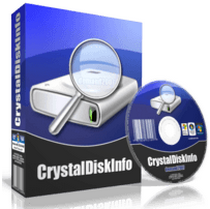

I like to do mine right before my weekly backup disk imaging.įorgot to note you should run DISM.exe /Online /Cleanup-image /Restorehealth from an elevated command prompt first. These kinds of things unless simplified can drive a person crazy (which, all in all, hasn't been as bad as it's made out to be).Īnd don't forget to throw an occasional simple sfc /scannow from the Windows Terminal (Admin) interface into the mix for OS integrity violations. It will also display the S.M.A.R. I personally have been satisfied just manually using Windows occasionally to monitor the most basic drive health (admin cmd prompt > wmic > diskdrive get status) on both personal computers and a small number of business workstations. CrystalDiskInfo displays basic HDD information, monitors S.M.A.R.T.

Later versions of Windows are pretty good at notifying users about approaching hard drive problems. Home/ Utilities & tools/ CrystalDiskInfo. This software requires administrator privileges. If you don't find any more problems everything should be fine. CrystalDiskInfo is open source software for checking HDD/SSD health status. I would chkdsk the drive in another week or two for bad sectors and maybe once again after that. If you used chkdsk with the /r parameter and are now not seeing any bad sectors, these, as stated above, have been marked as unusable and taken out of service where they should not cause a problem.

Drives often come straight from the manufacturer with bad sectors if the quantity falls within their acceptable specifications. Displays the S.M.A.R.T data as a list so you can see the specific issue that a hard drive may have.


 0 kommentar(er)
0 kommentar(er)
